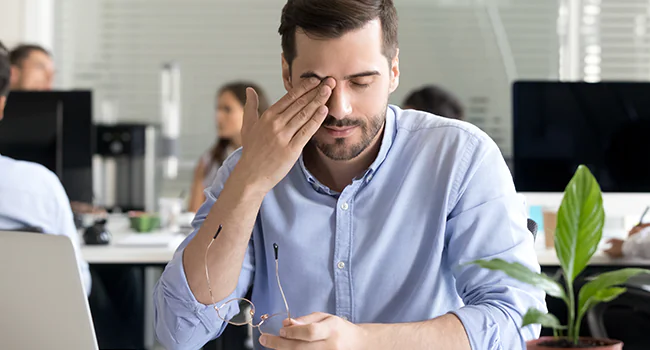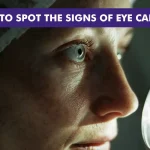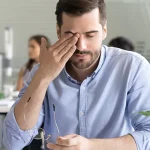|
Key Takeaways:
|
High eye pressure, also known as increased intraocular pressure, occurs when the fluid inside the eye (aqueous humour) does not drain properly, causing a buildup of pressure. If left untreated, elevated eye pressure can lead to conditions such as glaucoma, which may even result in permanent vision loss.
This blog will explain the symptoms of high eye pressure, its causes, risk factors, effects on the eyes, and available treatment options. We’ll also address frequently asked questions and share insights into maintaining optimal eye health.
What is Intraocular Pressure?
High eye pressure, or increased intraocular pressure, is a significant concern in eye health. While it often presents without noticeable symptoms, understanding its implications is crucial for maintaining vision. Normal eye pressure range usually falls between 10 to 21 mmHg, though this can vary with age. In this blog, we will explore symptoms of high eye pressure, how it’s measured, its relationship with glaucoma, and the importance of timely high eye pressure treatment.
What Indicates High Eye Pressure?
High eye pressure doesn’t always manifest with obvious symptoms. However, some signs may suggest elevated eye pressure:
- Eye discomfort or pain: A feeling of pressure or aching in or around the eyes.
- Headaches: Particularly those centered around the eyes or forehead.
- Blurred vision: Difficulty focusing or seeing clearly.
- Seeing halos around lights: Especially in low-light conditions.
It’s important to note that these symptoms of high eye pressure can also indicate other eye conditions, so consulting an eye care professional is essential.
Causes of Elevated Eye Pressure
There are several risk factors and causes of elevated eye pressure:
- Imbalance in Fluid Production and Drainage: The eye produces aqueous humour, which drains through the trabecular meshwork. Blockage or slow drainage increases pressure.
- Eye Trauma or Injury: Physical injury can disrupt fluid regulation, leading to long-term pressure changes.
- Steroid Use: Prolonged use of steroid medications, including eye drops, can increase intraocular pressure.
- Genetics: Family history of high eye pressure or glaucoma increases your risk.
- Medical Conditions: Conditions like diabetes, hypertension, or autoimmune disorders can affect eye pressure.
- Ageing: The risk of elevated eye pressure increases with age.
Understanding these causes can help you take proactive measures to control and monitor eye pressure effectively. However, you must also be aware of its symptoms.
Symptoms of High Eye Pressure
The symptoms of high eye pressure are often subtle, and many people may not notice any signs until the pressure causes damage. However, you should watch out for the following symptoms:
- Eye discomfort or pain
- Blurred vision or difficulty focusing
- Halos around lights
- Headaches, particularly near the eyes
- Redness of the eye
- Decreased peripheral vision
If you experience these symptoms, consult an ophthalmologist immediately to measure your intraocular pressure and assess your eye health.
How Does High Eye Pressure Affect the Eyes?
When high eye pressure persists, it can have serious effects on eye health. Here’s how it impacts your eyes:
- Damage to the Optic Nerve: Increased pressure damages the nerve fibres, which can lead to permanent vision loss.
- Development of Glaucoma: High eye pressure is a major risk factor for glaucoma, a leading cause of blindness.
- Reduced Peripheral Vision: Pressure buildup often starts affecting side vision, which can progress to central vision loss.
- Corneal Damage: Excessive pressure can cause corneal swelling or cloudiness, resulting in blurred vision.
To prevent these complications, timely diagnosis and appropriate high eye pressure treatment are essential.
How Is the Measurement of Eye Pressure Done?
The primary method for measuring eye pressure is tonometry. This test assesses the force exerted by the fluid inside the eye. A common technique is Goldmann applanation tonometry, which involves numbing the eye and using a small probe to flatten a part of the cornea.
Typical Eye Pressure Levels
The range of normal eye pressure generally falls between 10 to 21 mmHg, but normal eye pressure by age may differ slightly. Monitoring the eye pressure range regularly helps detect increased intraocular pressure early.
Relationship Between Eye Pressure and Glaucoma
Glaucoma is a group of eye diseases that damage the optic nerve, often due to increased intraocular pressure. While not everyone with elevated eye pressure develops glaucoma, it is a significant risk factor. Regular monitoring and early detection of eye pressure causes are vital for preventing vision loss.
What Happens If High Eye Pressure Is Left Untreated?
If elevated eye pressure persists without treatment, it can lead to:
- Optic nerve damage: Progressive loss of nerve fibers can result in vision impairment.
- Peripheral vision loss: Often starting with the loss of side vision.
- Complete vision loss: In advanced stages, untreated glaucoma can lead to blindness.
Therefore, managing high eye pressure is crucial to preserving long-term vision health.
High Eye Pressure Treatment Options
Managing high eye pressure involves various approaches:
- Medications: Prescription eye drops or oral medications can help reduce IOP by decreasing fluid production or improving drainage.
- Laser Therapy: Laser treatments can enhance fluid drainage from the eye.
- Surgical Procedures: In some cases, surgery may be necessary to create a new drainage pathway.
- Lifestyle Modifications: Maintaining a healthy diet, regular exercise, and reducing caffeine intake can support overall eye health.
It’s essential to work closely with an eye care professional to determine the most suitable high eye pressure treatment plan based on individual needs.
Conclusion
Elevated eye pressure is a serious condition that can lead to significant vision problems, if left untreated. Understanding the symptoms of high eye pressure, eye pressure causes, and available high eye pressure treatment options is crucial for maintaining eye health. Regular eye exams and open communication with healthcare providers play a vital role in early detection and effective management of increased intraocular pressure. Monitoring the normal eye pressure range and eye pressure range helps protect vision for the long term.
Have you been delaying an eye exam for quite some time? Book an Appointment with Centre for Sight in India!
FAQs
What does intraocular pressure mean?
Intraocular pressure refers to the fluid pressure inside your eye. It helps maintain the eye’s shape and ensures proper functioning of its internal structures.
How can you reduce high eye pressure?
High eye pressure can be managed with prescription eye drops, oral medications, laser therapy, or surgery. Lifestyle changes, such as regular exercise, healthy diet, and limiting caffeine, may also help support eye health.
High eye pressure, also known as ocular hypertension, often doesn’t cause noticeable symptoms. However, some individuals may experience symptoms such as mild eye discomfort, headaches, or changes in vision. In severe cases, high eye pressure can lead to glaucoma, which can cause vision loss or blindness if left untreated.
To lower eye pressure, your ophthalmologist may recommend prescription eye drops, oral medications, laser therapy, or surgical procedures depending on the underlying cause and severity of the condition. Additionally, lifestyle changes such as maintaining a healthy diet, managing stress, and avoiding activities that increase intraocular pressure (such as heavy lifting or strenuous exercise) may help manage eye pressure levels.
t’s not recommended to check your eye pressure at home without proper equipment and training. Measuring eye pressure requires specialized instruments such as a tonometer, which is typically only available in a clinical setting. Regular eye examinations by an eye care professional are essential for monitoring eye health and detecting changes in eye pressure or other conditions.
High eye pressure is caused by an imbalance between fluid production and drainage in the eye. Factors include genetics, trauma, medical conditions, and prolonged steroid use.
High eye pressure can be managed with medicated eye drops, laser therapy, or surgical treatments. Consult an ophthalmologist for the best treatment plan.
Yes, with timely diagnosis and proper treatment, glaucoma progression can be slowed or stopped, preventing vision loss. Regular monitoring is essential.
The range of normal eye pressure is typically between 10 mmHg and 21 mmHg. Values above this range indicate elevated eye pressure.
Eye pressure above 21 mmHg is considered elevated, but persistent levels above 30 mmHg are particularly dangerous and may lead to optic nerve damage.
Eye pressure can sometimes reduce naturally through lifestyle changes like regular exercise and a balanced diet, but medical intervention is often necessary for sustained control.





